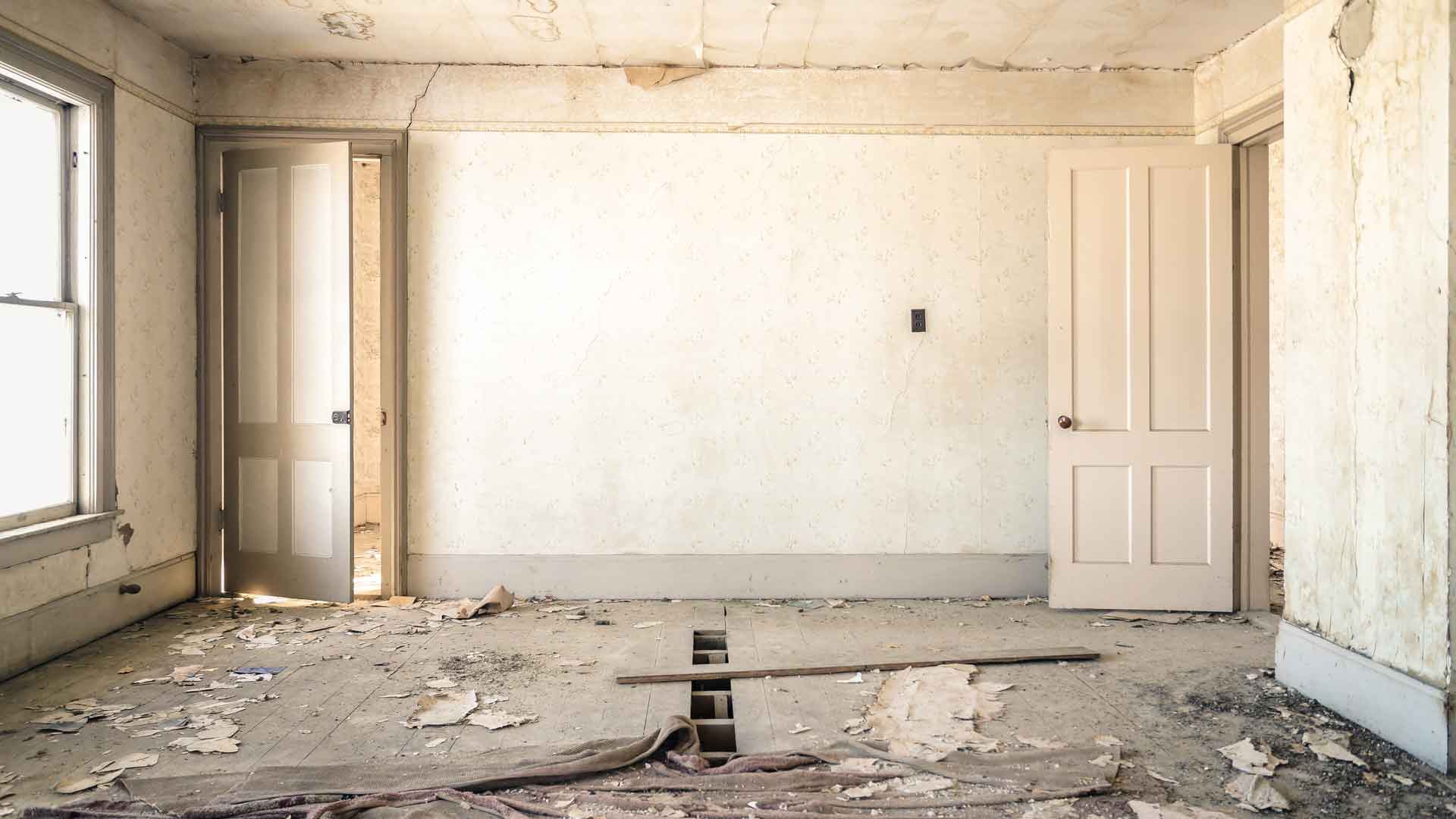

Articles
14 Ways To Stretch Your Renovation Budget
Modified: January 9, 2024
Discover 14 insightful articles on how to stretch your renovation budget. Learn practical tips to save money and get the most out of your remodeling project.
(Many of the links in this article redirect to a specific reviewed product. Your purchase of these products through affiliate links helps to generate commission for Storables.com, at no extra cost. Learn more)
Introduction
Renovating your home is an exciting project that allows you to transform your living space and add value to your property. However, it can also be a costly endeavor that requires careful budgeting and financial planning. The good news is that there are several ways to stretch your renovation budget and make the most of your investment. By implementing these strategies, you can create the home of your dreams without breaking the bank.
In this article, we will explore 14 effective ways to maximize your renovation budget. From prioritizing your goals to finding affordable materials and exploring financing options, these tips will help you make smart decisions and save money along the way.
Key Takeaways:
- Prioritize essential renovations, set a realistic budget, and explore affordable materials to stretch your renovation budget without compromising on quality or functionality.
- Take advantage of deals, government incentives, and negotiation skills to save money and make informed decisions throughout your renovation project. Keep track of expenses and stay organized for financial success.
Prioritize your renovation goals
Before diving into your home renovation project, it’s essential to identify your priorities. Determine which areas of your home need the most attention and focus on those first. Start by making a list of the renovations you want to tackle, whether it’s updating your kitchen, renovating your bathroom, or adding a new room.
By prioritizing your goals, you can allocate your budget accordingly and ensure that the most critical projects are completed first. This approach also allows you to break down your renovation into manageable phases, so you don’t feel overwhelmed or spread your budget too thin.
Take the time to evaluate the specific needs of your home and the areas that will provide the most value and enjoyment. For example, if your kitchen is outdated and impractical, investing in its renovation may have a higher return on investment than upgrading a less frequently used space.
Additionally, consider the long-term benefits of each renovation. Will it increase energy efficiency, improve functionality, or enhance the overall aesthetics of your home? Prioritizing your goals based on these factors will help you make informed decisions and make the most of your budget.
Remember, it’s crucial to be realistic about what you can achieve with your available funds. Prioritizing your goals allows you to focus on the most critical renovations and ensure that your money is spent where it matters most.
Set a realistic budget
One of the key factors in stretching your renovation budget is setting a realistic financial plan from the start. Take the time to evaluate your finances and determine how much you can comfortably afford to spend on your renovation project. This includes considering your current savings, potential loans or financing options, and any unexpected expenses that may arise.
Research the average costs of similar renovation projects in your area to get a ballpark figure of what you can expect to spend. It’s essential to be as accurate as possible, as underestimating your budget can lead to financial stress and compromises during the renovation process.
When setting your budget, it’s also important to include a contingency fund for unexpected expenses or changes that may arise during the project. Typically, experts recommend allocating around 10-20% of your total budget for unforeseen costs.
By setting a realistic budget, you can avoid overspending and ensure that your renovation stays within your financial means. It also helps you make informed decisions throughout the project, allowing you to prioritize your expenses and make adjustments if necessary.
Remember, it’s better to have a well-planned and realistic budget than to be strapped for cash halfway through your renovation. Taking the time to assess your finances and set a budget will set you up for success and give you peace of mind throughout the renovation process.
Research and compare prices
When it comes to stretching your renovation budget, thorough research and price comparison are crucial. Before making any purchases or hiring contractors, take the time to research different suppliers, materials, and service providers in your area. Look for multiple options and compare prices to ensure you’re getting the best value for your money.
Start by checking online sources, such as home improvement websites and forums, to gather information about the materials and services you’ll need for your renovation. This will give you an idea of the average prices and help you identify any potential cost-saving opportunities.
Visit local stores and showrooms to see the materials in person and get a sense of their quality. Speak to knowledgeable staff who can offer guidance and answer any questions you may have. Don’t be afraid to negotiate prices or ask for discounts – many suppliers are willing to negotiate, especially if you’re purchasing a significant amount of materials.
Additionally, consider reaching out to multiple contractors and gathering quotes for your renovation project. Be clear about your requirements and expectations and ask for detailed breakdowns of costs. This will allow you to compare prices, services, and timelines to ensure you’re making an informed decision.
Remember, the cheapest option isn’t always the best. Take into account the quality of materials and services, as well as the reputation and experience of the suppliers and contractors. Sometimes investing a little more upfront can save you money in the long run by ensuring durability and minimizing the need for repairs or replacements.
By thoroughly researching and comparing prices, you can make educated choices and find the best deals for your renovation project. Saving money on materials and services will contribute to stretching your budget and getting the most value out of your investment.
Get multiple quotes from contractors
When planning a renovation, it’s important to find the right contractor for the job. Getting multiple quotes from different contractors can help you not only find the best value for your budget but also ensure that you’re working with a qualified and reputable professional.
Start by researching and identifying several contractors who specialize in the type of renovation you’re planning. Ask for recommendations from friends, family, or neighbors who have recently completed similar projects. You can also check online directories and review websites to find contractors with positive feedback and reviews.
Contact each contractor and provide them with a clear and detailed description of your renovation project. Be specific about your expectations, timeline, and budget constraints. Request a written quote from each contractor, including a breakdown of costs and a timeline for completion.
Compare the quotes you receive, taking into consideration the total cost, the materials and products included, and the proposed timeline. It’s also important to evaluate the reputation and track record of each contractor. Look for online reviews and testimonials, and don’t hesitate to ask for references to get firsthand feedback from previous clients.
Keep in mind that the cheapest quote may not always be the best option. It’s important to balance cost with quality and experience. Look for a contractor who has a good reputation, solid experience in similar projects, and excellent communication skills.
Getting multiple quotes allows you to have a clear understanding of what’s included in the renovation cost and how different contractors are pricing their services. It also gives you the opportunity to negotiate and potentially lower the overall cost.
By taking the time to compare quotes and select the right contractor, you can ensure that your renovation stays within budget while maintaining high-quality workmanship. Clear communication and a good working relationship with your contractor are essential to a successful and cost-effective renovation.
Consider DIY options
If you’re looking to stretch your renovation budget, considering do-it-yourself (DIY) options can be a smart move. Taking on certain tasks yourself can help save money on labor costs and give you a sense of accomplishment along the way.
Before diving into any DIY projects, it’s important to assess your skills, knowledge, and available time. Be realistic about what you can handle and what might be better left to professionals. Simple tasks like painting, minor repairs, or installing fixtures and hardware can often be done by homeowners with little experience.
Research online tutorials, watch instructional videos, and consult DIY books and guides to learn the proper techniques and safety precautions for each task. Start with small projects to gain confidence and gradually work your way up to more complex renovations.
Keep in mind that while DIY can save money, it’s not always the most cost-effective option. Some tasks may require specialized tools or materials that can add up in expense. Additionally, if a job is not done correctly, it may end up costing more to fix mistakes than if you had hired a professional from the start.
When considering which tasks to tackle yourself, take into account your personal preferences, skill level, and the scope of the project. For example, if you enjoy painting and have the necessary tools, painting the walls yourself can be a relatively simple and cost-effective DIY task.
On the other hand, if the renovation project involves complex electrical, plumbing, or structural work, it’s best to leave it to professionals. Safety should always be a top priority, and certain tasks require specific expertise and knowledge to ensure proper installation and adherence to building codes.
By carefully evaluating DIY options and knowing your limits, you can save money on your renovation budget without compromising the quality and safety of the project. Take pride in the tasks you handle yourself, and enlist the help of professionals for those that require their expertise.
Opt for affordable materials
When renovating on a budget, one of the most effective ways to save money is by opting for affordable materials. While it’s natural to be attracted to high-end finishes and premium products, there are often budget-friendly alternatives that can achieve a similar look and functionality.
Start by exploring different material options and compare their prices. Visit local home improvement stores, browse online marketplaces, and consider checking out discount building supply centers. Keep an open mind and be willing to consider different materials that offer a good balance of quality and cost.
For example, when it comes to flooring, hardwood may be expensive, but laminate or vinyl flooring can provide a comparable aesthetic at a fraction of the cost. Similarly, for countertops, natural stone like granite or marble may be out of your budget, but there are affordable options like quartz or laminate that can provide a similar look.
Consider the long-term maintenance and durability of the materials as well. While inexpensive options may save you money upfront, they may require more maintenance or need to be replaced sooner than more durable materials. Strike a balance between cost and quality to ensure you’re making a wise investment.
Another approach is to look for discounted or clearance items. Many stores offer discounted prices on overstocked items, discontinued lines, or display models. These materials are often in excellent condition and can be significantly cheaper than their original price. Keep an eye out for sales, promotions, and clearance events, and be flexible with your choices to take advantage of these offers.
Lastly, consider utilizing salvaged or reclaimed materials. Old doors, windows, fixtures, or architectural elements can add character and uniqueness to your renovation while saving you money. Check out salvage yards, demolition sites, or online marketplaces where people sell reclaimed materials. Not only will you save money, but you’ll also contribute to eco-friendly practices by giving these materials a new life.
By opting for affordable materials, you can significantly reduce your renovation costs while still achieving a beautiful and functional result. Research, compare prices, and explore alternative options to find the best value for your budget without compromising on quality.
Shop for deals and discounts
When trying to stretch your renovation budget, it’s essential to be a savvy shopper and take advantage of deals and discounts. With careful planning and research, you can find great savings on the materials, fixtures, and appliances needed for your project.
Start by keeping an eye out for sales and promotions at home improvement stores and online retailers. Many stores offer seasonal discounts, clearance sales, or special deals on specific products. Sign up for newsletters, follow social media accounts, and check websites regularly to stay updated on the latest offers.
Timing is key when it comes to shopping for deals. Consider purchasing materials and appliances during major holiday sales events or annual clearance events. Black Friday, Cyber Monday, and Memorial Day are just a few examples of popular shopping holidays where you can often find significant discounts on home improvement items.
Another tip is to explore bulk-buying options. Buying materials in larger quantities can often result in discounted prices. If you have multiple projects or rooms to renovate, consider purchasing items like paint, tiles, or flooring in bulk. Just be sure to calculate the quantity needed accurately to avoid excess waste or unused materials.
Don’t forget about online auction and classified websites, where homeowners often sell their unused or surplus renovation materials at discounted prices. You can find everything from tiles and cabinets to light fixtures and plumbing fixtures at significantly reduced costs. It’s important to exercise caution when buying from these sources, ensuring that the materials are in good condition and accurate measurements are provided.
In addition to sales and online sources, consider inquiring about contractor discounts. Some suppliers offer special pricing for professionals in the construction and renovation industry. If you’re working with a contractor, they may be able to secure discounts on your behalf, ultimately reducing the overall project cost.
Finally, don’t be afraid to negotiate prices with suppliers, especially for larger purchases. Many retailers are willing to negotiate to secure a sale. Be polite but firm, and don’t hesitate to inquire about any available discounts or ask for better prices. You may be surprised at the savings you can achieve by simply asking.
By actively searching for deals and discounts, you can make significant savings on your renovation project. Take advantage of sales, promotions, bulk-buying options, and online sources to find the best prices without compromising on quality.
Consider using salvaged materials or shopping at architectural salvage yards for items like doors, windows, and fixtures. You can find unique, high-quality pieces at a fraction of the cost of new items.
Reuse and repurpose existing items
When looking to stretch your renovation budget, one of the most cost-effective strategies is to reuse and repurpose existing items in your home. Instead of purchasing brand new furniture, fixtures, or decor, consider how you can give new life to items you already have.
Start by taking inventory of your current belongings and assess their potential for repurposing or refurbishing. For example, you can give an old dresser a fresh coat of paint and new hardware to transform it into a stylish accent piece for your renovated bedroom. Similarly, you can update outdated light fixtures by replacing the shades or giving them a coat of spray paint.
Consider repurposing items as well. An old wooden ladder can be transformed into a trendy bookshelf, or a vintage door can become a unique dining table. With a little creativity, you can turn unwanted or unused items into functional and stylish additions to your renovated space.
Repurposing doesn’t have to stop at furniture. Look for ways to repurpose materials as well. For example, if you’re tearing down a wall during your renovation, salvage the lumber to create a rustic accent wall or use it for DIY shelving. This not only saves money but also adds a touch of character and uniqueness to your space.
In addition to repurposing existing items, consider reusing construction materials from your renovation. Don’t immediately discard doors, windows, or flooring that are in good condition. Instead, store them for future projects or donate them to organizations that can use them. Not only does this help reduce waste, but it also saves you money on buying new materials.
Another way to reuse and repurpose items is by exploring thrift stores, flea markets, and online platforms where you can find secondhand items at a fraction of the cost. You might discover hidden gems that can be integrated into your renovation and give your space a unique touch.
By reusing and repurposing existing items, you not only reduce your renovation costs but also add a personal and eco-friendly touch to your space. Embrace your creativity and think outside the box to give new life and purpose to items you already have or can find at affordable prices.
Focus on essential renovations
When working with a limited budget, it’s crucial to focus on the essential renovations that will have the most significant impact on your home. By prioritizing these key areas, you can allocate your resources efficiently and make the most of your available funds.
Start by assessing the functionality and condition of different areas in your home. Identify any areas that need immediate attention or repairs to ensure the safety and livability of your space. This could include addressing structural issues, fixing plumbing or electrical problems, or repairing damaged walls or flooring.
Next, consider the renovations that will provide the most value and enhance the overall appeal of your home. Key areas such as the kitchen and bathroom often have the highest return on investment. Investing in these spaces can significantly impact the resale value of your property.
Focus on improvements that will improve energy efficiency and reduce ongoing maintenance costs. Upgrading insulation, installing energy-efficient windows, or investing in a programmable thermostat are all examples of renovations that can save you money on utility bills in the long run.
Once you have addressed essential repairs and upgrades, you can then allocate the remaining budget to cosmetic enhancements that can enhance the aesthetics of your home. This could include painting the walls, replacing outdated light fixtures, or adding small touches like new curtains or decorative elements.
Remember, it’s important to be realistic about what you can achieve within your budget. Avoid getting caught up in unnecessary or purely cosmetic renovations that may strain your finances. By focusing on the essential renovations, you can ensure that your limited funds are put to good use and that your home becomes safer, more functional, and visually appealing.
As your budget allows, you can always tackle additional renovations in the future. Take a phased approach and prioritize the crucial areas first to make the most of your renovation budget.
Plan strategically for long-term savings
When renovating your home, it’s important to consider not just the immediate costs, but also the long-term savings that certain renovations can bring. By strategically planning for energy efficiency and maintenance, you can save money in the long run and maximize the value of your renovation investment.
Start by evaluating the energy efficiency of your home. Look for opportunities to improve insulation, upgrade to energy-efficient windows and doors, and invest in energy-efficient appliances. While these upgrades may require an upfront investment, they can significantly reduce your monthly utility bills over time.
Consider installing a programmable thermostat to optimize heating and cooling settings. This can help you save money by automatically adjusting the temperature when you’re not at home or during certain times of the day.
Another area to focus on is water efficiency. Install low-flow fixtures, such as showerheads and faucets, and consider upgrading to water-efficient toilets. These simple changes can lead to substantial water savings and reduced water bills without compromising on functionality.
As you plan your renovation, think about the maintenance requirements of certain materials and finishes. Opting for low-maintenance materials can reduce the need for frequent repairs and replacements in the future. For example, choosing durable and easy-to-clean flooring or countertops can save you time and money on maintenance tasks down the line.
Additionally, think about the long-term durability and lifespan of the materials you choose. Investing in high-quality materials may cost more initially, but they often last longer and require fewer repairs or replacements. This can save you money in the long run and minimize ongoing maintenance expenses.
Consider incorporating sustainable and eco-friendly practices into your renovation plans. Use environmentally friendly materials, such as recycled or low VOC (volatile organic compound) products. These choices not only contribute to a greener planet but can also potentially qualify you for tax incentives or rebates.
By strategically planning for long-term savings, you can make cost-effective choices that benefit you both now and in the future. Prioritize energy efficiency, water efficiency, low maintenance, and durability to maximize your renovation investment and enjoy long-term financial benefits.
Consider financing options carefully
When undertaking a home renovation project, it’s essential to carefully consider your financing options. Making informed decisions about how to fund your renovation can help you manage your budget effectively and avoid unnecessary debt. Here are some financing options to consider:
Savings: If you have enough savings set aside, using your own funds to finance the renovation can be the most financially secure option. By paying upfront, you can avoid interest charges and the long-term commitment of loans. However, it’s important to ensure that using your savings for the renovation won’t leave you financially vulnerable.
Personal Loans: Personal loans can be a viable option if you do not have sufficient savings. Compare interest rates and terms from different lenders to secure the most favorable loan. This option allows you to have a lump sum of money that you can use for your renovation, and repay it over a fixed period.
Home Equity Loans or Lines of Credit: If you have built equity in your home, you may consider tapping into it through a home equity loan or line of credit. These loans use your home as collateral, allowing you to borrow against the appraised value of your property. Home equity loans generally have lower interest rates compared to personal loans, but it’s important to consider the risks, such as the potential loss of your home if you’re unable to repay the loan.
Financing Plans from Suppliers: Some suppliers may offer financing plans or payment options specifically designed for home renovations. These plans often come with low or no interest rates for a promotional period. Before opting for this type of financing, carefully read the terms and conditions to ensure there are no hidden fees or penalties.
Government Assistance Programs: Explore government assistance programs that may be available in your area. These programs can provide grants or loans with favorable terms for certain renovations, especially those related to energy efficiency or accessibility. Research and check if you qualify for any local, state, or federal programs.
Before committing to any financing option, assess your financial situation and consider factors such as interest rates, repayment terms, and any associated fees. Carefully calculate how these payments will fit into your monthly budget and ensure you can comfortably afford them without adding undue financial strain.
It is advisable to consult with a financial advisor or mortgage specialist who can provide guidance tailored to your specific circumstances. They can help you assess the available financing options and choose the one that best aligns with your financial goals and needs.
By carefully considering your financing options, you can make an informed decision that allows you to fund your renovation while keeping your financial situation secure.
Explore government incentives and rebates
When planning a home renovation, it’s worth exploring the various government incentives and rebates that may be available. These programs can provide financial assistance or tax benefits, helping to offset the costs of your renovation project. Here are some key areas to consider:
Energy Efficiency Programs: Many governments offer incentives for energy-efficient renovations. These programs encourage homeowners to make environmentally friendly upgrades such as installing energy-efficient appliances, improving insulation, or upgrading to energy-saving windows. In some cases, you may be eligible for financial incentives, grants, or tax credits for these types of renovations.
Solar and Renewable Energy Incentives: If you’re considering adding solar panels or other renewable energy systems to your home, there may be government incentives available to offset the costs. These programs can provide financial incentives, tax credits, or grants to encourage homeowners to adopt renewable energy sources and reduce their environmental impact.
Accessibility and Age-in-Place Programs: Some governments offer financial assistance or incentives for making accessibility upgrades to homes. These programs may provide grants or low-interest loans to help homeowners make modifications to improve accessibility for individuals with disabilities or to facilitate aging in place. Examples of eligible renovations may include installing ramps, grab bars, or accessible bathrooms.
Historical Preservation Incentives: If your home is designated as a historical property or is located in a designated historic district, there may be government programs in place to provide financial assistance for the preservation and renovation of historically significant features. These programs often offer grants or tax credits to encourage the preservation of heritage homes and maintain the architectural integrity of these properties.
To explore available government incentives and rebates, start by researching local government websites or contacting relevant departments or agencies. They can provide information on current programs, eligibility requirements, and application processes. It’s important to familiarize yourself with any deadlines, documentation requirements, and program limitations.
Keep in mind that government incentives and rebates may vary depending on your location and the specific renovation project. Be sure to thoroughly review the terms and conditions of any programs you’re considering and consult with experts or professionals if needed.
By taking advantage of government incentives and rebates, you can not only save money on your renovation project but also contribute to environmental sustainability, historical preservation, or the accessibility of homes. These programs can make a significant difference in offsetting the costs and enhancing the overall value of your renovation.
Read more: How To Finish Your Basement On A Budget
Negotiate with suppliers and contractors
When it comes to stretching your renovation budget, don’t be afraid to negotiate with suppliers and contractors. Effective negotiation skills can help you secure better prices, discounts, or favorable terms, ultimately saving you money on your renovation project. Here are some tips to consider:
Do your research: Before entering into negotiations, it’s essential to gather information about market prices, competitor offerings, and industry standards. Research the average costs of materials and services you plan to use in your renovation. This knowledge will empower you when negotiating and help you understand what prices and terms are reasonable.
Get multiple quotes: Obtain quotes from multiple suppliers or contractors for the products or services you need. This will create competition and give you leverage during negotiations. Compare the quotes you receive and use them as a basis for negotiation. Be open and transparent with each party about the other quotes you’ve received, and ask if they can match or better those prices.
Highlight long-term business potential: If you’re planning a substantial renovation that involves multiple stages or ongoing maintenance, emphasize the potential for repeat business. Suppliers and contractors may be more willing to negotiate if they see the opportunity for a long-term working relationship.
Bulk purchasing: If you’re buying materials in bulk or need a large quantity, negotiate for discounted prices. Suppliers may be open to reducing their prices to secure a larger sale. Show them that you’re a serious customer, and don’t hesitate to ask for a better price based on the volume of your purchase.
Timing matters: Consider the timing of your negotiations. Near the end of the month or during slower seasons, suppliers and contractors may be more willing to negotiate to meet their targets or fill their schedules. Additionally, if you can be flexible with timelines, offer to work around their availability in exchange for better pricing.
Highlight loyalty or referral potential: If you’ve worked with a supplier or contractor previously or have the potential to refer them to other clients, use that as an opportunity to negotiate. Mention your history or potential for future business and ask if they can offer any discounts or better terms as a sign of appreciation for your loyalty or referrals.
Don’t forget about extras: During negotiations, explore opportunities for added value or extras. Ask if suppliers can throw in additional products or services at a discounted rate. For example, if you’re purchasing kitchen cabinets, inquire if they can include installation or provide discounted accessories.
Remember, negotiation is a give-and-take process. Be respectful, clear, and open to compromise. It’s important to maintain good relationships with suppliers and contractors while still maximizing your savings. Keep in mind that negotiation isn’t just about price; it can also involve terms, warranties, or customization options.
By honing your negotiation skills and being proactive in seeking better pricing and terms, you can significantly lower your renovation costs and make the most of your budget.
Keep track of expenses and stay organized
When undertaking a renovation project, it’s essential to keep track of your expenses and stay organized throughout the process. By maintaining accurate records and staying on top of your finances, you can effectively manage your budget, avoid overspending, and make informed decisions. Here are some tips to help you stay organized:
Create a renovation budget: Start by creating a detailed budget that outlines all the projected costs for your renovation project. Include categories for materials, labor, permits, and any other relevant expenses. This will serve as a guide to track your spending and help you prioritize your expenses.
Document and retain receipts: Keep a record of all receipts, invoices, and contracts related to your renovation. This includes receipts for materials, payments to contractors, and any other relevant documentation. Store them in a safe and organized manner, whether it’s a physical folder or a digital storage system.
Use budgeting apps or spreadsheets: Consider using budgeting apps or spreadsheets to track your expenses in real-time. These tools can help you stay on top of your spending, monitor your budget, and ensure that you’re not exceeding your financial limits. They can also provide visual representations of your spending patterns, making it easier to identify areas where you may need to adjust your budget.
Regularly update your budget: As you make purchases and progress through different stages of your renovation, update your budget to reflect the actual expenses incurred. This will help you have a clear overview of the project’s financial status at any given time and provide insights into areas where you may need to make adjustments.
Track unexpected expenses: Renovation projects often come with unexpected expenses that may arise due to unforeseen issues or changes in plans. It’s important to track these additional costs and adjust your budget accordingly. By accounting for unexpected expenses, you can mitigate financial strain and ensure that you stay within your overall budget.
Communicate and collaborate with your team: If you’re working with contractors or designers, maintain open lines of communication to keep track of expenses and stay updated on any changes or modifications. Regularly touch base with your team to discuss the budget, address any concerns, and ensure everyone is on the same page.
Review and reconcile your expenses: Periodically review your expenses and reconcile them against your budget. This will give you an overview of how your spending aligns with your initial plan and allow you to make adjustments as needed. Look for areas where you may be overspending and brainstorm ways to bring costs back in line with your budget.
By keeping track of your expenses and staying organized, you can maintain control over your renovation budget and avoid any financial surprises. Being mindful of your spending habits and staying on top of documentation will help you make informed decisions, make adjustments when necessary, and ensure that your renovation project stays on track financially.
Conclusion
Renovating your home doesn’t have to drain your bank account. With careful planning and strategic decision-making, you can stretch your renovation budget and achieve the desired results while keeping your finances in check. By implementing the fourteen tips outlined in this article, you can maximize your investment and make the most of your renovation project.
Start by prioritizing your renovation goals and focusing on the essential areas that will have the most impact on your home’s value and functionality. Set a realistic budget and stick to it, taking advantage of research, price comparisons, and negotiations to get the best deals on materials and services.
Consider DIY options for tasks within your skill set, and opt for affordable materials that provide a similar look and quality without breaking the bank. Take advantage of deals and discounts, reuse and repurpose existing items, and strategically plan for long-term savings by considering energy efficiency, maintenance, and potential government incentives or rebates.
When it comes to financing, explore different options and choose the one that aligns with your financial situation and goals. Don’t underestimate the power of negotiation, whether it’s with suppliers, contractors, or your own team. Finally, stay organized and keep track of expenses, ensuring that you’re staying within your budget and making informed decisions throughout the renovation process.
In conclusion, renovating on a budget is achievable with the right strategies and mindset. By implementing these tips and being proactive in your approach, you can transform your home while maximizing your investment and creating a space you love within your financial means. Remember, a successful renovation is not just about the end result but also about enjoying the journey and feeling satisfied with the overall process.
Frequently Asked Questions about 14 Ways To Stretch Your Renovation Budget
Was this page helpful?
At Storables.com, we guarantee accurate and reliable information. Our content, validated by Expert Board Contributors, is crafted following stringent Editorial Policies. We're committed to providing you with well-researched, expert-backed insights for all your informational needs.




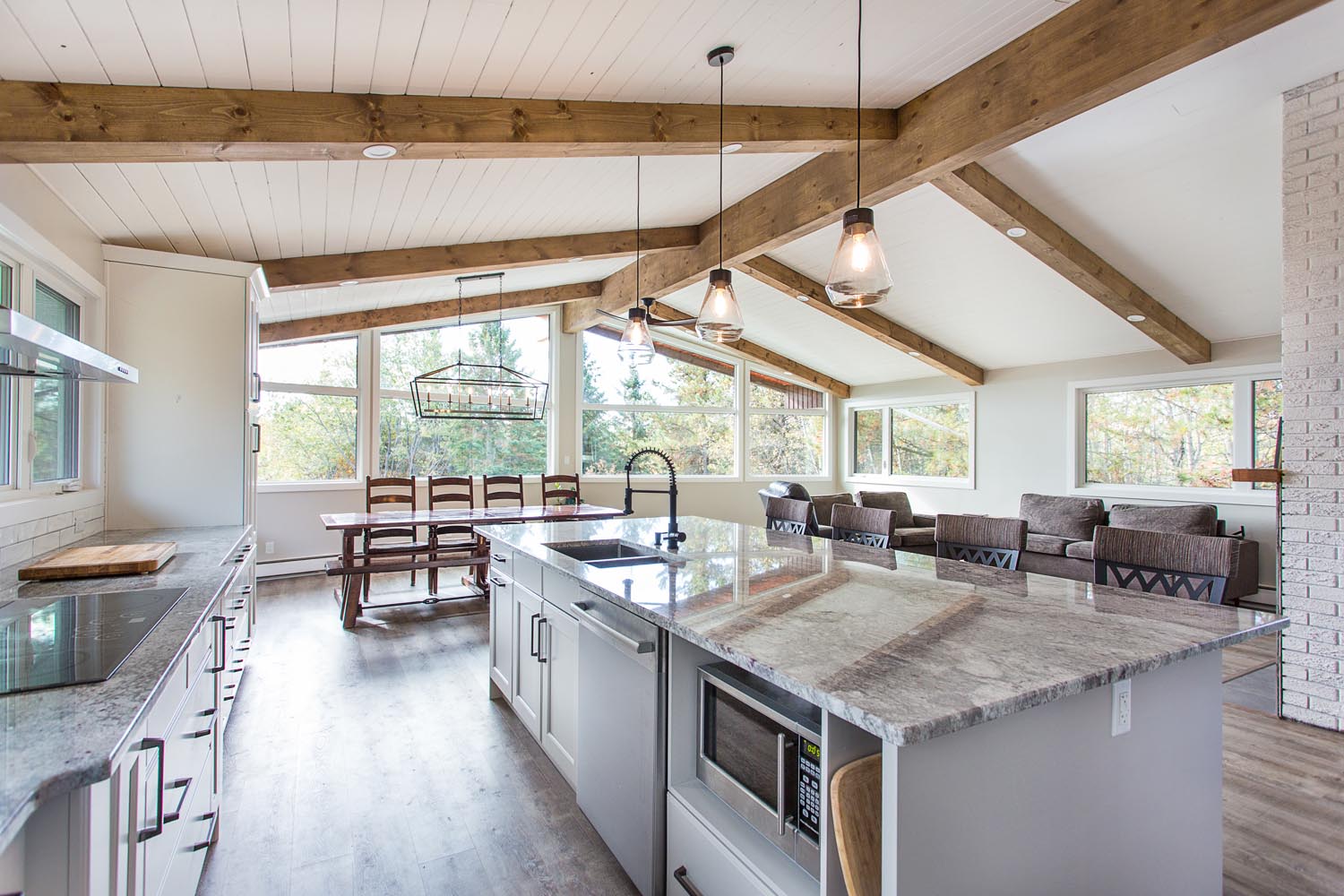

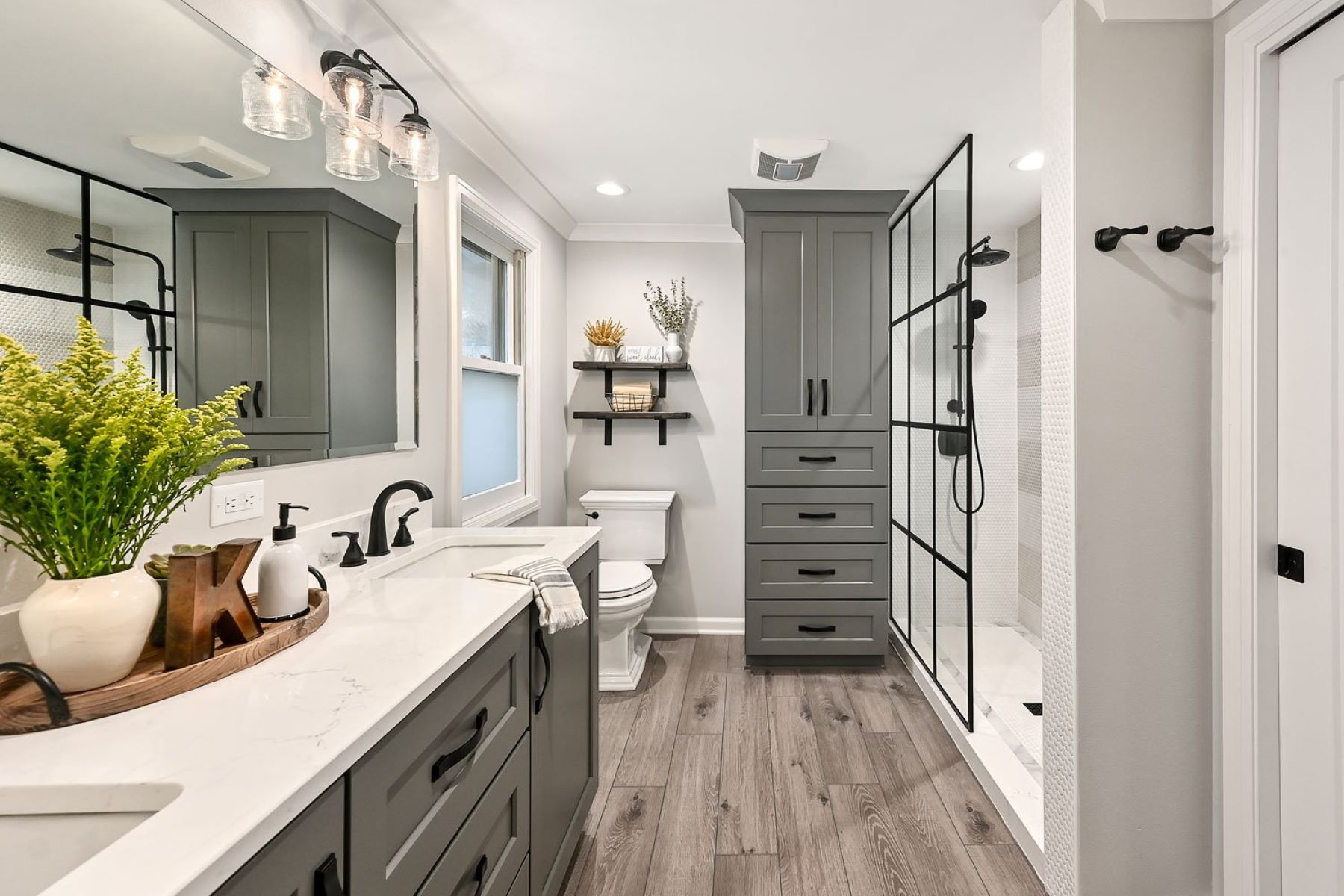

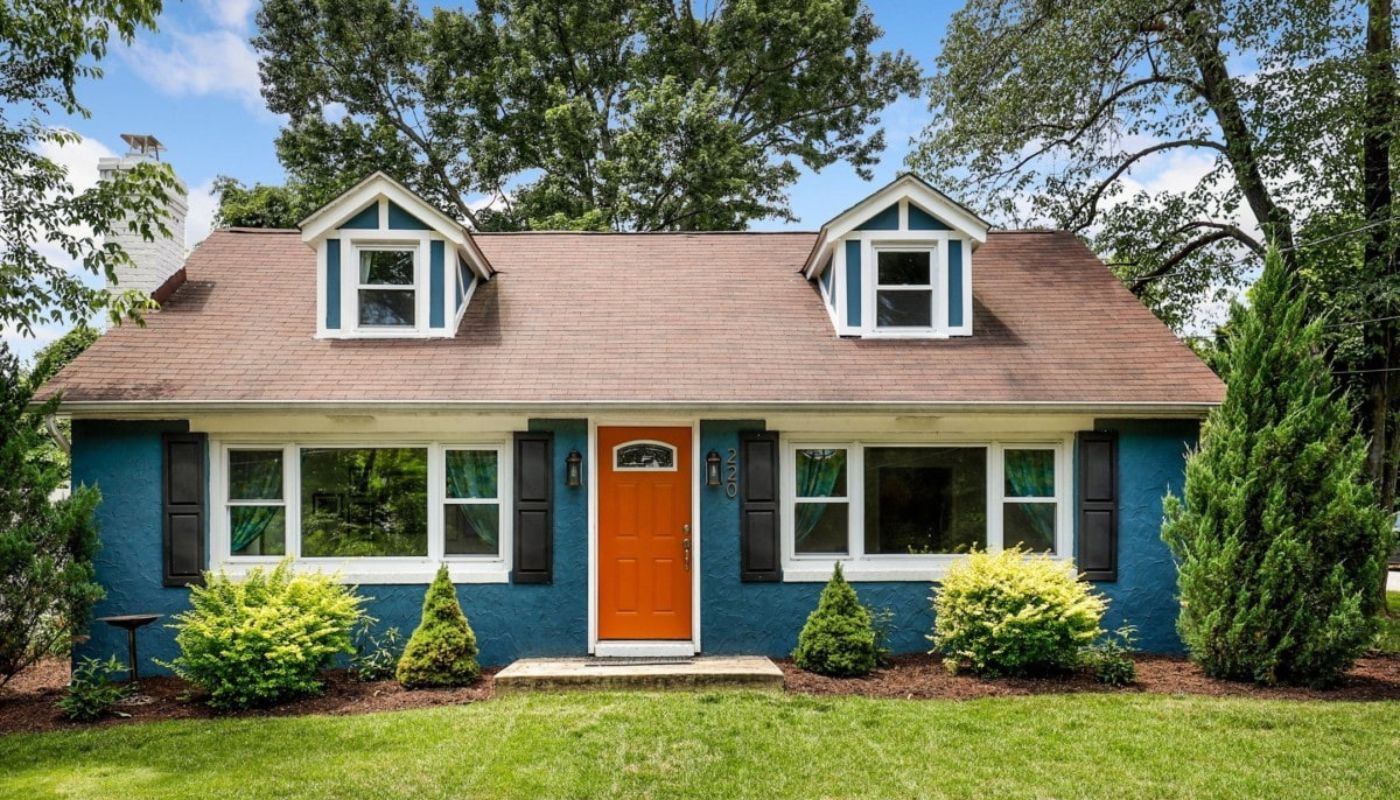


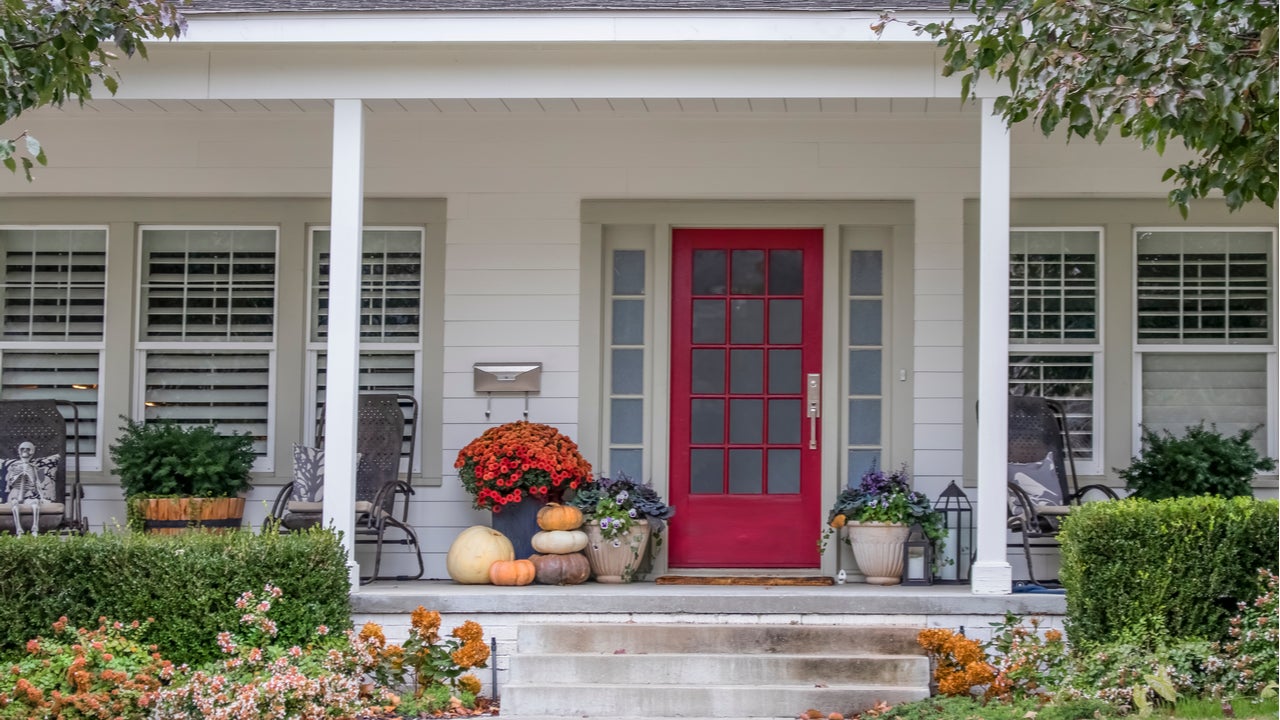

0 thoughts on “14 Ways To Stretch Your Renovation Budget”